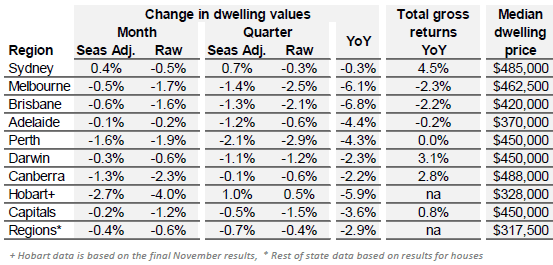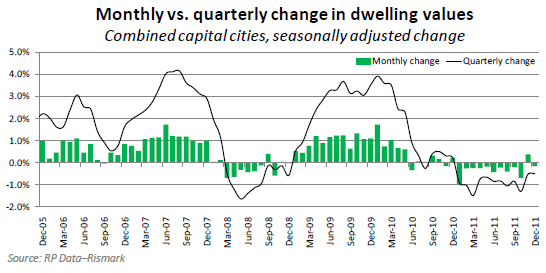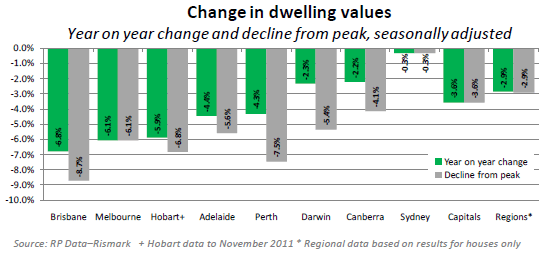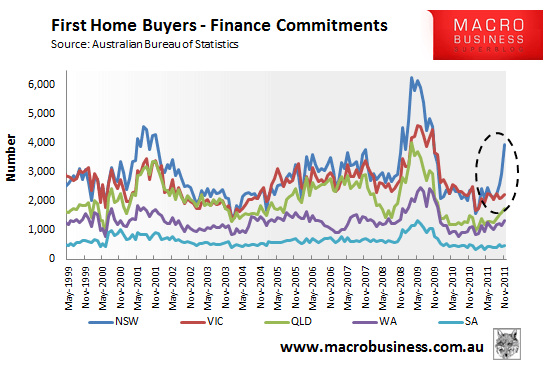Please find below the full RP Data-Rismark December Home Value Index media release.
Here are the key figures taken from the release. First, the change in dwelling values:

Note that the -0.2% fall in December seasonally adjusted capital city dwelling values was offset by a +0.3% upwards revision in the November seasonally adjusted figures, from +0.1% to +0.4%.
Second, below is a chart showing the combined monthly versus quarterly change in seasonally adjusted dwelling values:

As you can see, Australian dwelling values have fallen for 11 out of the past 12 months, with the exception being November’s +0.4% rise.
Next, here’s a chart showing the seasonally adjusted year on year change and decline from peak dwelling values by region:

As you can see, although losses are across the board, they are most severe in Brisbane (-6.7% YoY; -8.7% DfP), Perth (-4.3% YoY; -7.5% DfP), Hobart (-5.9% YoY; -6.8% DfP) and Melbourne (-6.1% YoY; -6.1% DfP). By contrast, Sydney has held up quite well, declining only -0.3% in both year-on-year terms and from peak.
Being Australia’s largest housing market, accounting for nearly one-third of Australia’s capital city dwellings, Sydney’s dwelling price resilience is clearly underpinning national capital city dwelling values. The question then is, what is preventing Sydney’s home prices from falling?
According to the RPData release, Sydney’s values have actually risen by +0.4% in the month of December and by +0.7% over the quarter. One logical explanation for this rise is the New South Wales’ (NSW) Government’s announcement in early September 2011 that it would end the stamp duty concessions provided to first home buyers of pre-existing dwellings on 1 January 2012. This concession, which provided up to $18,000 of stamp duty relief, appears to have brought forward a significant amount of first home buyer demand in NSW as buyers rushed to benefit from the stamp duty concessions before they expired.
The surge in purchases by NSW first home buyers is clearly evident in the below chart, which shows the percentage of housing finance commitments attributable to first home buyers:

As you can see, the number of NSW first home buyer finance commitments (24%) are well above the national average (20%). And with the other states’ first home buyers remaining relatively flat, and NSW being the largest state in Australia, the surge in NSW first home buyer finance commitments is primarily responsible for boosting the national average as well.
Given that the NSW stamp duty concession expired on 31 December 2011, there is a high likelihood that demand from NSW first-home buyers will recede over the first quarter of 2012, creating headwinds for Sydney home prices and, by extension, national prices as well.
When combined with today’s RBA Credit Aggregates data, which showed weakening housing credit growth, it’s hard to see anything but Australian house prices experiencing a continuation of the ‘slow melt’ that began in late-2010.

